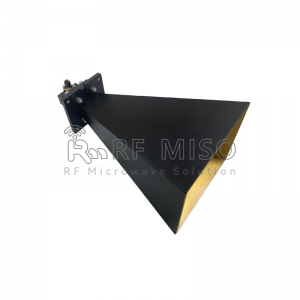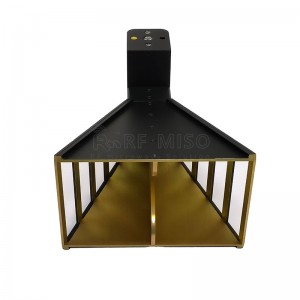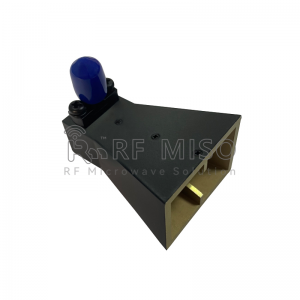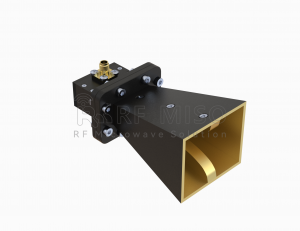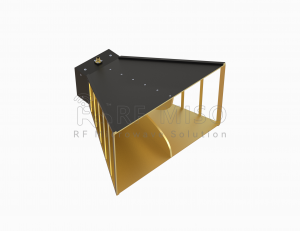Broadband horn antennas are devices used in the field of radio frequency communications to transmit and receive signals over a wide range of frequencies. They are designed to provide a wide bandwidth and can operate over multiple frequency bands.Horn antennas are known for their high gain and directivity, which makes them suitable for various applications such as wireless communications, radar systems, and satellite communication. They are commonly used in point-to-point communication links, where long-range and high-capacity data transmission is required.The design of a broadband horn antenna involves carefully selecting the shape and size of the horn structure to achieve a wide operating bandwidth. The horn shape gradually expands from a narrow throat to a wider aperture, which allows for better impedance matching and efficiency across a wide range of frequencies.Broadband horn antennas can be constructed using different materials, such as metallic or dielectric materials, depending on the specific requirements. Metallic horn antennas are commonly used for high-power applications, while dielectric horn antennas are preferred for their lightweight and compact design.It's worth noting that although broadband horn antennas can cover a wide frequency range, their performance may vary across different frequency bands. Antenna gain, radiation pattern, and impedance matching may change as the operating frequency changes. Therefore, proper analysis and design considerations are essential to ensure optimal performance across the desired bandwidth.
How it works:
Its working principle is as follows: Each frequency corresponds to a resonator: In a broadband horn antenna, broadband operation is achieved by distributing signals of different frequencies to different resonators. Each resonator is capable of intensifying signals within a specific frequency range. Horn structure: The horn structure of a broadband horn antenna plays an important role. By rationally designing the size, shape, curvature and other parameters of the speaker, signals of different frequencies can be diffused and focused inside the speaker. Broadband transmission: After passing through the horn structure, the broadband horn antenna can radiate signals at multiple frequencies. These signals are transmitted through space radiation and can achieve broadband transmission. Matching network: In order to ensure the performance and impedance matching of the broadband horn antenna, a matching network is usually added. The matching network consists of capacitors and inductors and is used to adjust the input impedance of the antenna to match the impedance of the transmission line. The design and working principle of a broadband horn antenna are relatively complex, and factors such as the frequency range of the signal, radiation efficiency, and impedance matching need to be fully considered. It is usually used in broadband communication systems, such as radar, satellite communications, vehicle communications, etc.
Broadband horn antenna series product introduction:
E-mail:info@rf-miso.com
Phone:0086-028-82695327
Website:www.rf-miso.com
Post time: Oct-08-2023




